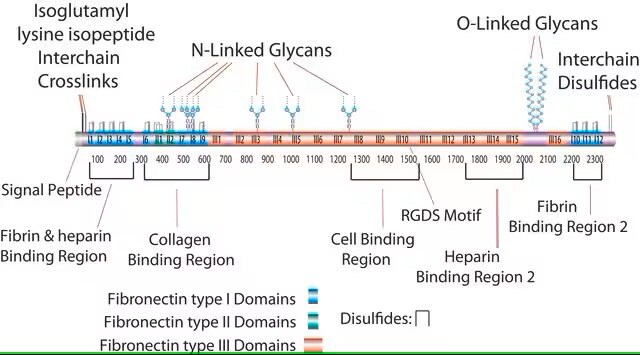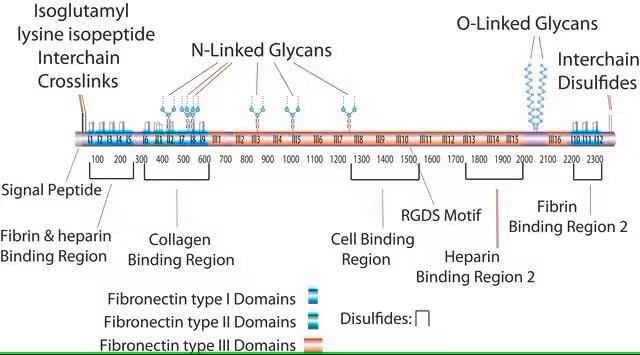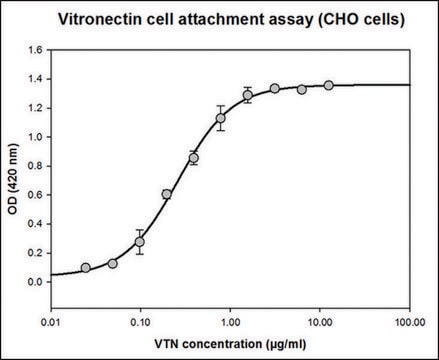ECM001
Human Fibronectin
recombinant, expressed in HEK 293 cells, powder, suitable for cell culture
Sinónimos:
Fibronectin, CIG, Cold-insoluble globulin, FN
About This Item
Productos recomendados
Nombre del producto
Fibronectina, recombinant, expressed in HEK 293 cells, lyophilized powder, suitable for cell culture
origen biológico
human
Nivel de calidad
recombinante
expressed in HEK 293 cells
esterilidad
sterile
Ensayo
≥95% (SDS-PAGE)
Formulario
lyophilized powder
mol peso
259.5 kDa (The protein migrates as a higher band on SDS-PAGE due to glycosylation.)
envase
pkg of 200 μg
técnicas
cell culture | mammalian: suitable
impurezas
≤1 EU/μg endotoxin, tested
solubilidad
water: soluble
Nº de acceso NCBI
Nº de acceso UniProt
Condiciones de envío
ambient
temp. de almacenamiento
−20°C
Información sobre el gen
human ... FN1(2335)
¿Está buscando productos similares? Visita Guía de comparación de productos
Descripción general
Aplicación
Recommended for use as a cell culture substratum at 1-5 μg/cm2 or 0.5-50 μg/ml. Optimal concentration depends on cell type as well as the application or research objectives.
Acciones bioquímicas o fisiológicas
Características y beneficios
- Human-derived fibronectin
- Produced through recombinant expression in HEK 293 cells
- Low endotoxin levels
- Absence of bacterial contamination
Forma física
Nota de análisis
Código de clase de almacenamiento
11 - Combustible Solids
Clase de riesgo para el agua (WGK)
WGK 3
Punto de inflamabilidad (°F)
Not applicable
Punto de inflamabilidad (°C)
Not applicable
Elija entre una de las versiones más recientes:
Certificados de análisis (COA)
¿No ve la versión correcta?
Si necesita una versión concreta, puede buscar un certificado específico por el número de lote.
¿Ya tiene este producto?
Encuentre la documentación para los productos que ha comprado recientemente en la Biblioteca de documentos.
Los clientes también vieron
Artículos
The extracellular matrix (ECM) is secreted by cells and surrounds them in tissues.
Attachment Factors for 3-Dimensional Cell Culture
Protocolos
Dilute fibronectin to the desired concentration. Optimum conditions for attachment are dependent on cell type and application. The typical coating concentration is 1 – 5 ug/cm2.Fibronectin coating protocol, products, and FAQs.
Nuestro equipo de científicos tiene experiencia en todas las áreas de investigación: Ciencias de la vida, Ciencia de los materiales, Síntesis química, Cromatografía, Analítica y muchas otras.
Póngase en contacto con el Servicio técnico








